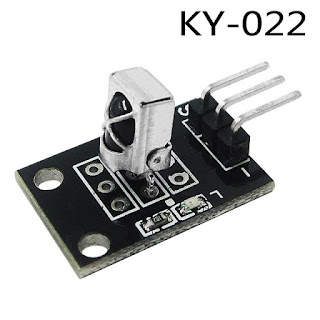Hi,
Before reading this post, I would recommend to read the post :
https://johnsylvester-johnsylvester.blogspot.com/2018/09/iot-key-concepts-skills-required.html
To understand IoT development in depth , it is necessary to have overview of the following concepts:
1. IoT architectures
When building IoT solutions, challenges arise while :
a) When connecting many heterogeneous devices,
b) Communicating using different networking protocols, and
c) Producing data in a range of formats.
An architecture ( for IoT solution) describes the organization of :
a) physical aspects (that is, the things) and
b) Virtual aspects (like services and communication protocols).
Layered architecture approach helps to manage the complexity of IoT solutions
1) Devices layer - Sensors come in this layer.
2) Edge layer - Part of pre-processing is done by Sensor circuit or it is done by Gateway / Router
3) Cloud layer - Does data processing , often complemented by mobile apps ,web-based
client,dashboards and visualizations.
IoT reference architectures are readily available and it helps to manage complexity and facilitate better interoperability.
IoT reference architecture generally take care of following challenges faced :
a) Managing devices ,data and its challenges :
1) security,
2) interoperability,
3) constrained devices,
4) scalability, and
5) availability.
Standardized device management protocols for IoT devices in broadband and mobile industries include:
1)TR-069 Customer Premises Equipment (CPE) WAN Management Protocol (CWMP)
2)OMA DM - Open Mobile Alliance Device Management (OMA DM)
3)LWM2M - OMA's Lightweight Machine to Machine (LWM2M)
b) Connectivity and communication using protocols
c) Analytics and applications. Analytics approaches include
1) distributed analytics,
2) real-time analytics,
3) edge analytics, and
4) machine learning.
Few Analytics solutions available in the market :
1) Oracle Edge Analytics and Stream Analytics
2) Azure Stream Analytics
3) AWS IoT
4) Google Cloud Dataflow
5) IBM Watson IoT Platform Analytics
d) Security challenges :
1) Secure constrained devices
2) Authorize and authenticate devices
3) Manage device updates
4) Secure communication
5) Ensure data privacy and integrity
6) Secure web, mobile, and cloud applications
7) Ensure high availability
8) Detect vulnerabilities and incidents
9) Manage vulnerabilities
10) Predict and preempt security issues
Some widely referenced IoT reference architectures include:
1) Internet of Things – Architecture (IoT-A)
2) IEEE P2413 - Standard for an Architectural Framework for the Internet of Things (IoT)
3) Industrial Internet Reference Architecture (IIRA)
Example : Industrial Internet Reference Architecture (IIRA)'s constructs and application:
Reference architectures serve as a template to apply to domains or specific platforms. Each vendor come up with their own way of implementing the IoT architecture, few reference architectures in market :
1) IBM IoT reference architecture
2) Intel IoT platform Reference Architecture
3) Microsoft Azure IoT Architecture
4) Amazon Web Services Pragma Architecture
Example : IBM IoT reference Architecture :
2. IoT developer kits
Developer kits are physical hardware kits that you can use to fast-track development of your IoT solutions.
Some popular IoT developer kits :
a) Texas Instruments SimpleLink SensorTag Kit
b) Adafruit Feather HUZZAH ESP8266 IoT Starter Kit
c) Seeed Studio BeagleBone Green Wireless IOT Developer Prototyping Kit
d) Raspberry Pi 3 IoT Learner Kit
e) Avnet AT&T Cellular IoT Starter Kit
3. Understand Large-scale IoT projects
Few examples of large-scale IoT scenarios are :
1) Connected cars
2) Connected cities
3) Smart Buildings
4) Manfacturing
5) Supply Chain Management
6) Energy management
7) Environmental safety
8) Waste management
9) Transportation: Parking, Traffic, and Public Transportation
10) Emergency management and law enforcement
11) Citizen engagement
This post contains the topics to master IoT in a nutshell. For further readings , refer to the references.
If you have any comments, feel free to drop a note. Have a nice day.... :)
References :
1) https://www.ibm.com/developerworks/library/iot-lp201-next-steps-guide-iot-developers/index.html
2) https://www.ibm.com/developerworks/library/iot-lp301-mastery-guide-iot-developers/index.html
IBM IoT Reference Architecture :
3) https://www.ibm.com/cloud/garage/architectures/iotArchitecture
Industrial Internet Reference Architecture (IIRA)
4) https://www.iiconsortium.org/IIC_PUB_G1_V1.80_2017-01-31.pdf?cm_mc_uid=42240287207114889661528&cm_mc_sid_50200000=1498959849






















































